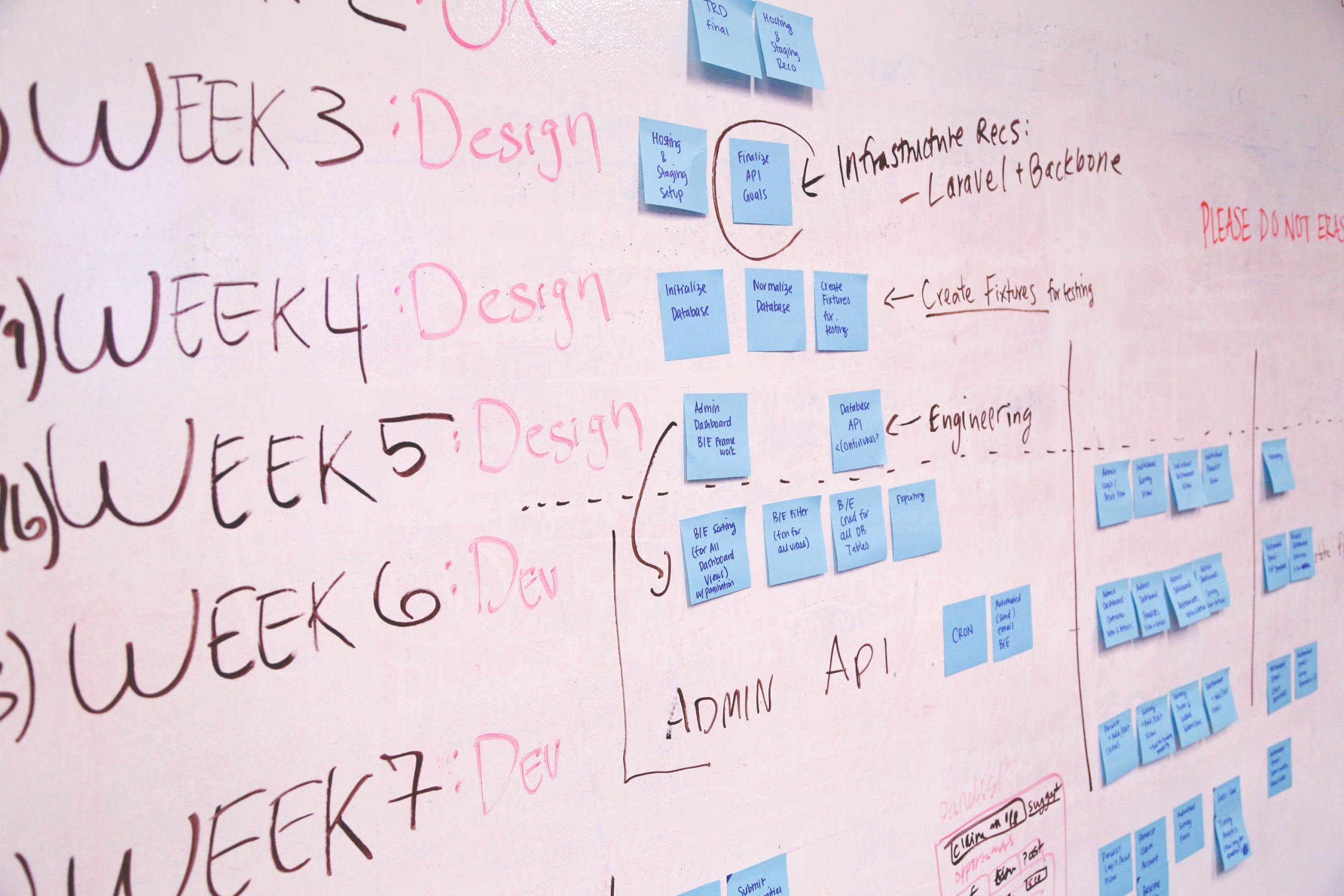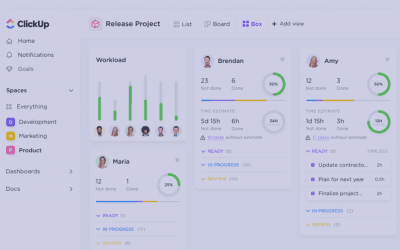
Summary: Senior Project Manager Martin Quatt is our resident business process mapping expert. In this blog post, he explains the benefits of the technique. Martin has provided this service in addition to project management for several of our larger nonprofit clients. However, organizations in any sector can benefit from business process mapping as part of their overall approach to project management.
Optimize or Perish
As the business landscape changes, efficiency and effectiveness are key qualities that allow a company to remain successful and look for competitive advantages. Organizations, regardless of industry or size, survive by optimizing their operations to enhance productivity and achieve sustainable growth.
Nonprofits, in particular, have experienced a significant hit in their fundraising numbers, especially since the pandemic began. According to a study released by Candid and the Center for Disaster Philanthropy, nearly a third of U.S. nonprofits are at risk of shuttering due to financial challenges. We Vermonters don’t have to look far to find another nonprofit that has closed its doors. In fact, Vermont’s oldest nonprofit, Vermont Elders, has been serving our community for the past 43 years just shut its doors at the end of the year.
Smart nonprofit executives and managers don’t just focus on bringing in more funds, but they also look at exactly how their business works and how to optimize and automate with business process mapping.
What is Business Process Mapping?
Business process mapping is a visual representation of a company’s workflows, procedures, and operations. It’s creating a picture of all the interconnected functions that occur every day to make your organization run. By detailing each step of a process, down to the smallest task, process mapping provides a comprehensive view of related actions that define a business process. It uncovers the relationships between processes that may not always be obvious and identifies which stakeholders are required to achieve the desired outcome within designated timeframes to achieve even greater efficiencies. Leaders can use this visual blueprint to gain insights into an organization’s operations, identify bottlenecks, and streamline processes for optimal performance.
Finding Inefficiencies and Bottlenecks
Business process mapping highlights an organization’s inefficiencies as well as the bottlenecks that impede smooth workflows. When you go through a routine process as a regular action, you often don’t see gaps or issues to which you’ve become accustomed and have been working around instinctively. It’s like when there’s an alarm going off for so long, you don’t even hear it anymore because you’ve tuned it out. By visually representing each step in a process, areas where tasks may be neglected, delayed, duplicated, or overly complicated become clear. It’s an objective way to take a step back and see from a better vantage point. Becoming aware of and identifying issues is the first step towards resolving them, leading to smoother operations, improved efficiency, and a more consistent outcome.
Continuous Improvement and Adapt to Change
The practice of business process mapping aligns perfectly with the concept of continuous improvement. Continuous improvement is the cycle of identifying possible improvements to a process, trying them out, reviewing the impact of the change, and continuing to refine or adjust to improve as much as possible. Whether it’s optimizing existing workflows to meet a new opportunity, react to environmental impacts like Covid, adapt to changes in technologies, or realign for changes to organizational structure, the mapped processes serve as a foundation for ongoing enhancement. Process mapping is the foundation of being able to continuously improve – if your starting point is unclear, it’s impossible to tell whether the changes you make are helpful to the business.
Compliance and Risk Management
Business process mapping is vital to the survival of organizations operating in highly–regulated industries. By documenting processes, they can ensure adherence to industry standards and regulatory requirements. Especially as requirements or rules change, having a process map allows you to clearly identify what changes you’ll need to make to remain compliant. Moreover, business process mapping facilitates effective risk management by highlighting potential points of failure or non-compliance, allowing businesses to address issues before they spiral into regulatory nightmares.
Facilitation of Training and Onboarding
Business process maps serve as valuable training and onboarding resources. When bringing someone into your organization, they need to have materials that clearly show them what’s expected of their role and how to do it. Process maps detail the intricacies of roles with visual representations of workflows, making what can be complicated or overwhelming much easier to understand. It also serves as reference material the new employee can use for independent guidance as they take on job tasks, reducing the burden on tenured staff. This not only expedites the onboarding process but also ensures that employees have a comprehensive understanding of how their tasks contribute to the overall success of the organization.
We conducted this work for the Center for Creative Leadership (CCL) and four months post-project, CCL’s Director of Operations, Benadette Mutisya remarked:
“The [business] process mappings have been invaluable. They have provided wonderful value across our teams by clarifying responsibilities and streamlining workflows – very pivotal in how we all work together. We have shared them within our groups and I have also used them as onboarding tools with several new team members. Such great tools to help get new employees up to speed much faster on our key processes!”
Building the Processes into Your Tools (Like ClickUp)
The work that Martin and the Tuck team have done to map out the business processes at United Way of Greater Knoxville (UWGK) create a terrific roadmap for how you can templatize and automate those process in a tool (in the case of UWGK — ClickUp). By mapping out all of the steps, we were able to:
- Create workflows with auto-assignment to the right person or team
- Build automations that assign due dates and create new steps
- Develop templates of repeatable project plans that can be reused over and over by team members
In addition to being helpful for building things out in a tool, the process maps are great for creating buy-in across the team. Here’s some feedback we got from UWGK’s Senior Director of Community Engagement, Torrie Boggs:
“Martin asked wonderful questions throughout the process that helped everyone involved consider gaps and possible paths forward. This thorough review on the front end clarified everything before taking it to the leadership team, so it was easy to explain why each of the steps were outlined in a specific way. The process map was a great tool for helping the leadership team understand the need for a project management tool and getting their buy-in.”
Conclusion
In any competitive marketplace, adaptability and efficiency are crucial for success. Business process mapping emerges as a strategic tool to address the many internal and external changes impacting organizations. . From fostering transparency and teamwork to identifying inefficiencies and supporting compliance efforts, the benefits of business process mapping are far-reaching. While it can take time and effort up front to map all your processes, harnessing the power of visual representation is an investment that pays dividends in improved productivity, and being prepared in meeting the next organizational hurdle.
When an organization invests in a business process mapping initiative, its leadership can:
-
- Define key operational processes to establish a baseline and promote transparency
- Clarify roles and responsibilities
- Identify inefficiencies, redundancies, and bottle-necks
- Mitigate challenges with meeting regulatory and compliance requirements
- Adapt to internal and external changes
- Seek opportunities for growth
While asking one of your employees to start doing business process maps may grant them an unparalleled perspective on your organization (and countless hours of informal continuing education), it pulls them away from the primary responsibilities your business depends on. The time and resources expended will cut into any efficiencies realized through the exercise.
On the other hand, an experienced consultant like Martin Quatt can deliver customized business process maps in less time due to years of experience and with an external objectivity to provide the most unbiased perspective. Tuck Consulting Group offers Program Managers and Consultants like Martin to help organize your team, optimize your processes, and harness your unique strengths for an edge against the competition. Learn how tailored process mapping with Martin and the Tuck Team can elevate your organization by booking a meeting with us here.

Martin Quatt
Consultant
Martin Quatt (he/him/his) is a consultant with Tuck Consulting Group. He’s a transplated Vermonter “born south of Rutland”, attending many different schools, both in and out of state, including attending kinderschule (kindergarten) in Germany. Martin served over 6 years in the Air National Guard as an Avionics Specialist. He received NCO of the Year Award for the 158th fighter wing.
When not working at his desk, Martin squeezes in as many outdoor activities as each day will allow (trail running with his dog). He also enjoys cooking and traveling with his family.


